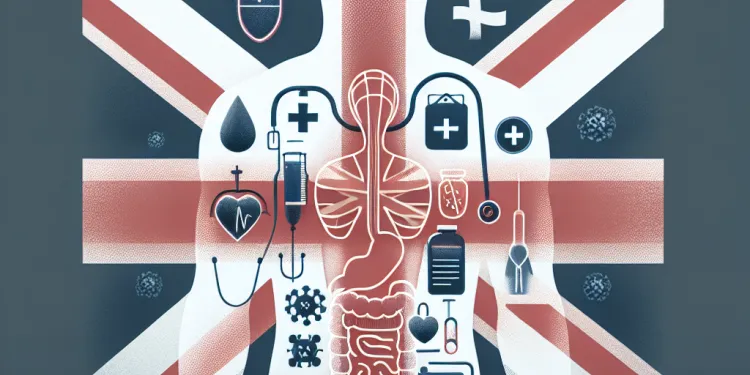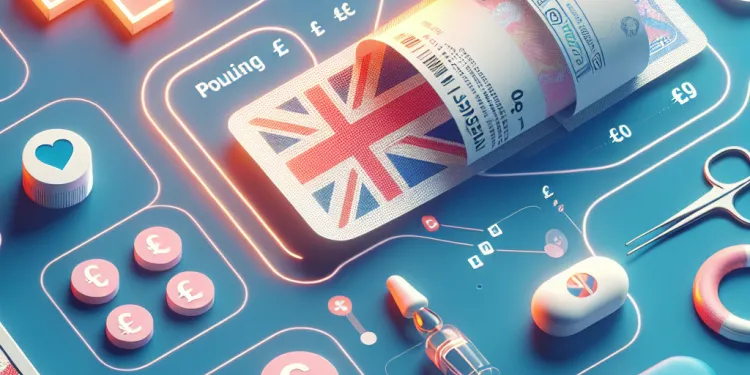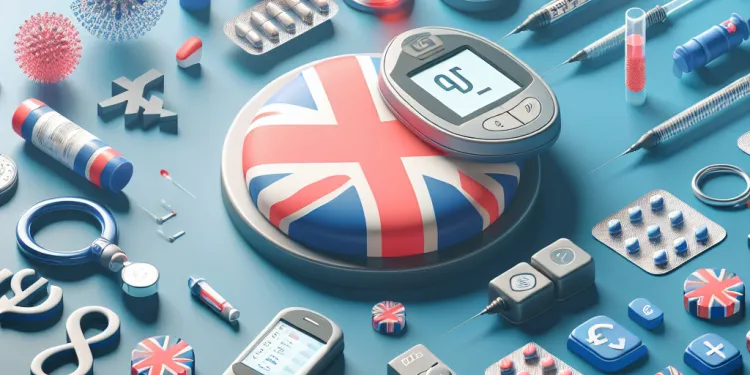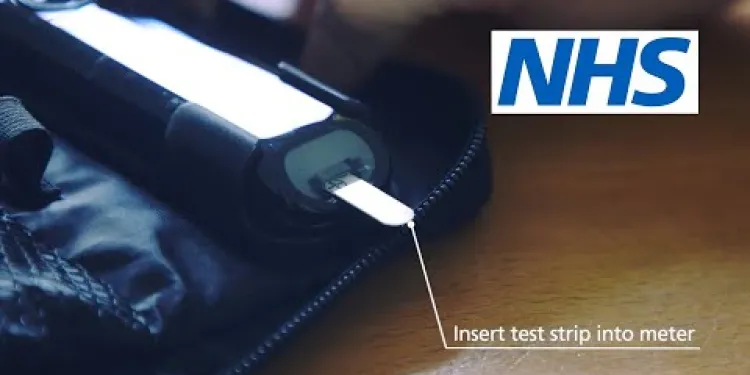
Find Help
More Items From Ergsy search
-

Can GLP-1 levels be measured?
Relevance: 100%
-

What is GLP-1?
Relevance: 74%
-

Is GLP-1 naturally occurring?
Relevance: 74%
-

What does GLP-1 stand for?
Relevance: 71%
-

Where is GLP-1 produced in the body?
Relevance: 70%
-

What is the connection between GLP-1 and insulin?
Relevance: 69%
-

Is GLP-1 related to any other hormones?
Relevance: 68%
-

Are GLP-1 medications injectable?
Relevance: 68%
-

What is the half-life of GLP-1?
Relevance: 67%
-

Are there any dietary factors that influence GLP-1 secretion?
Relevance: 67%
-

How does GLP-1 affect appetite?
Relevance: 67%
-

How do GLP-1 receptor agonists work?
Relevance: 65%
-

Can GLP-1 be used as a medication?
Relevance: 65%
-

What impact does GLP-1 have on glucose metabolism?
Relevance: 65%
-

What role does GLP-1 play in diabetes management?
Relevance: 63%
-

Do GLP-1 medications affect weight?
Relevance: 63%
-

Are there any common side effects of GLP-1 medications?
Relevance: 62%
-

Are there any GLP-1 medications that are taken orally?
Relevance: 61%
-

How does Ozempic affect blood sugar levels?
Relevance: 49%
-

How effective is Mounjaro in controlling blood sugar levels?
Relevance: 48%
-

Can GLP-1 be used for type 1 diabetes?
Relevance: 43%
-

Can cortisol levels be measured?
Relevance: 40%
-

What are PSA levels? - Prostate Cancer
Relevance: 38%
-

Can diet influence cortisol levels?
Relevance: 38%
-

Can exercise influence cortisol levels?
Relevance: 38%
-

Why is reducing aldosterone levels important?
Relevance: 38%
-

What are incretins?
Relevance: 37%
-

What can low levels of cortisol cause?
Relevance: 37%
-

What factors can influence cortisol levels?
Relevance: 37%
-

What can high levels of cortisol cause?
Relevance: 36%
-

How can stress management affect cortisol levels?
Relevance: 35%
-

Can cortisol levels impact mood and mental health?
Relevance: 35%
-

How often should I check my blood glucose levels?
Relevance: 35%
-

Can Baxdrostat affect blood sugar levels?
Relevance: 35%
-

How does climate change affect pollen levels?
Relevance: 34%
-

What SPF level is recommended to prevent sunburn?
Relevance: 34%
-

Do all pregnancy tests detect the same levels of hCG?
Relevance: 34%
-

How do cortisol levels differ between acute and chronic stress?
Relevance: 34%
-

Are there any lifestyle changes that can help regulate cortisol levels?
Relevance: 34%
-

Diabetes: How to check your blood glucose level | NHS
Relevance: 33%
Introduction to GLP-1
Glucagon-like peptide-1 (GLP-1) is a hormone that plays a crucial role in glucose metabolism and appetite regulation. It is one of the incretin hormones released in the gut in response to food intake. GLP-1 stimulates insulin secretion, inhibits glucagon release, and reduces appetite, making it a significant target for the management of type 2 diabetes and obesity.
The Importance of Measuring GLP-1 Levels
Measuring GLP-1 levels can provide critical insights into a person's metabolic health. In clinical settings, understanding GLP-1 responses can help tailor treatments for individuals with metabolic disorders. For instance, therapies targeting GLP-1 are often used in the treatment of type 2 diabetes, and knowing a patient's GLP-1 levels can assist healthcare professionals in optimizing these therapies.
Methods of Measuring GLP-1 Levels
GLP-1 levels can be measured using laboratory-based blood tests. These tests involve taking a blood sample, which is then analysed using specific assays designed to detect and quantify GLP-1. There are several types of assays available, including enzyme-linked immunosorbent assays (ELISA) and radioimmunoassays (RIA). These tests can identify both total GLP-1 levels and active GLP-1, which is the form that exerts physiological effects.
Challenges in Measuring GLP-1
Measuring GLP-1 accurately can present several challenges. The hormone is rapidly degraded in the body, primarily by the enzyme dipeptidyl peptidase-4 (DPP-4), which can complicate the measurement process. To obtain accurate results, it is crucial to stabilize the blood sample immediately after collection to prevent degradation. This typically involves the use of DPP-4 inhibitors in blood collection tubes.
Clinical Implications of GLP-1 Measurements
For patients with type 2 diabetes, assessing GLP-1 levels can inform the effectiveness of GLP-1 receptor agonists, a class of medications used to improve glycemic control. Moreover, as GLP-1 has been implicated in appetite regulation, measuring its levels can provide valuable insights into the mechanisms of obesity and the effectiveness of weight loss therapies.
Conclusion
In summary, measuring GLP-1 levels can be a valuable tool in the management of metabolic disorders. Despite the challenges associated with its measurement, advancements in assay techniques have made it possible to obtain reliable results that can guide treatment decisions. Understanding a patient's GLP-1 response can enhance the customization of diabetes and obesity treatments, ultimately improving patient outcomes.
What is GLP-1?
GLP-1 is a hormone found in your body. It helps control blood sugar levels and makes you feel full after eating. Your body makes GLP-1 when you eat food. It helps release insulin, stops another hormone called glucagon, and makes you feel less hungry. Doctors look at GLP-1 to help people with type 2 diabetes and people who are overweight.
Why Check GLP-1 Levels?
Checking GLP-1 levels helps doctors understand your health better. For people with diabetes, knowing GLP-1 levels can help doctors give the best treatment. This is important for people who need medicine for diabetes.
How Do You Check GLP-1 Levels?
Doctors use blood tests to check GLP-1 levels. They take a small sample of your blood and look at it in a lab. There are different ways to test the blood, such as ELISA and RIA, which help find out how much GLP-1 is in the blood.
Problems with Checking GLP-1
It can be hard to measure GLP-1 because it breaks down quickly in the body. An enzyme called DPP-4 causes this to happen. To get good results, the blood sample must be protected as soon as it is taken. Special tubes that stop DPP-4 are used for this.
Why GLP-1 Measurements Matter
For people with type 2 diabetes, knowing GLP-1 levels helps see if the medicine is working. GLP-1 also helps control feeling hungry, so measuring it is useful for understanding and treating overweight problems.
In Short
Checking GLP-1 levels is important for treating diabetes and weight issues. Even though it can be tricky to measure, better testing methods make it possible. Knowing how GLP-1 works in your body helps doctors give the best care and make you feel better.
Frequently Asked Questions
What are GLP-1 levels?
GLP-1 (glucagon-like peptide-1) levels refer to the amount of GLP-1 hormone present in the blood. GLP-1 is an incretin hormone that helps regulate blood sugar levels by enhancing insulin secretion.
Can GLP-1 levels be measured?
Yes, GLP-1 levels can be measured using blood tests that quantify the hormone's concentration in the bloodstream.
Why would someone want to measure their GLP-1 levels?
Measuring GLP-1 levels can help assess insulin secretion function, diagnose certain metabolic disorders, and evaluate the effectiveness of treatments aimed at enhancing GLP-1 activity.
How is a GLP-1 level test performed?
A GLP-1 level test requires a blood sample, typically taken from a vein in the arm. The sample is then analyzed in a laboratory to determine the concentration of GLP-1.
Are there specific preparations needed for a GLP-1 test?
You may need to fast before having your GLP-1 levels measured, but specific instructions depend on the healthcare provider's guidelines.
What do normal GLP-1 levels indicate?
Normal GLP-1 levels suggest an appropriate balance of insulin secretion and glucose metabolism, which are important for maintaining healthy blood sugar levels.
What can cause elevated GLP-1 levels?
Elevated GLP-1 levels can result from conditions that promote increased hormonal secretion, such as certain medications that enhance GLP-1 activity or rare hormonal disorders.
What can low GLP-1 levels indicate?
Low GLP-1 levels may indicate problems with insulin secretion or glucose regulation and are often seen in conditions like type 2 diabetes.
What is the significance of GLP-1 in diabetes management?
GLP-1 is important in diabetes management because it stimulates insulin production, inhibits glucagon release, and slows gastric emptying, helping control blood sugar levels.
Are there treatments that affect GLP-1 levels?
Yes, there are medications like GLP-1 receptor agonists that can increase GLP-1 activity and are used to treat type 2 diabetes.
How long does it take to get results from a GLP-1 level test?
The time it takes to get results varies, but generally, it can take a few days as the blood sample needs to be analyzed in a lab.
Are there any risks associated with measuring GLP-1 levels?
The test involves standard blood draw risks, such as minor bruising or discomfort at the puncture site, but overall, it's a safe procedure.
Is a GLP-1 test covered by insurance?
Coverage for a GLP-1 test depends on the insurance policy and whether the test is deemed medically necessary.
How do GLP-1 levels change throughout the day?
GLP-1 levels can fluctuate based on food intake and timing. They typically rise after eating and vary throughout the day as part of normal metabolic regulation.
Can lifestyle changes affect GLP-1 levels?
Yes, lifestyle changes like diet and exercise can influence GLP-1 levels and improve insulin sensitivity and overall metabolic health.
What role does GLP-1 play in appetite regulation?
GLP-1 helps regulate appetite by promoting satiety, which can lead to reduced food intake and is beneficial for weight management.
Can GLP-1 levels be measured at home?
Currently, there are no at-home tests for measuring GLP-1 levels; it requires a laboratory setting for accurate measurement.
What other hormones are related to GLP-1?
Other incretin hormones like GIP (gastric inhibitory polypeptide) work alongside GLP-1 to regulate insulin and blood sugar levels.
How does GLP-1 interact with insulin?
GLP-1 enhances insulin secretion in response to food intake, helping to maintain stable blood glucose levels post-meal.
Can GLP-1 levels indicate predisposition to metabolic disorders?
Abnormal GLP-1 levels might signal risk factors for metabolic disorders and can aid in early detection and treatment planning.
What Are GLP-1 Levels?
GLP-1 is something in your body that helps you feel full after eating. It also helps control your blood sugar. If you want to understand GLP-1 better, you can:
- Use picture books to see how it works.
- Listen to a fun video that talks about GLP-1.
GLP-1 is a special helper in your blood. It helps control how much sugar is in your blood. It does this by telling your body to use more insulin, which is something your body makes to keep blood sugar levels healthy.
Can we find out how much GLP-1 is in the body?
GLP-1 is something in our body that helps control sugar levels. Doctors can measure it with a special test. This test uses a small sample of your blood.
If it's hard to go to a doctor for a test, you can ask a nurse to visit or talk to a health professional online.
Using simple tools like reminder apps can help you remember to check in with your doctor.
Yes, doctors can check how much GLP-1 is in your blood by doing a blood test.
Why do people check GLP-1 levels?
People sometimes want to know their GLP-1 levels to understand their health better. GLP-1 is something in your body that helps control sugar levels and hunger.
When people know their GLP-1 levels, they can make better choices about food and health.
If you find reading hard, here are some tips:
- Ask someone to read with you.
- Use text-to-speech tools to listen to the information.
- Break big words into smaller parts to understand them.
Checking GLP-1 levels helps doctors see how well the body makes insulin. It can also help find some health problems and see if some treatments are working well.
How do we do a GLP-1 level test?
The doctor or nurse will take a little bit of blood from your arm using a needle. This helps them check your GLP-1 level.
If you are worried or scared, you can bring someone with you to help you feel better. You can also take deep breaths to stay calm.
Sometimes, listening to music or playing with a fidget toy can help you feel more relaxed during the test.
A GLP-1 test needs a little bit of your blood. A nurse or doctor will take blood from your arm. After that, the blood goes to a special place called a lab. There, they look at the blood to check how much GLP-1 is in it.
If you find it hard to understand medical tests, it might help to ask your doctor to explain it in simple words. You can also take a trusted friend or family member with you to the doctor's office to help remember what is said.
Do I need to get ready for a GLP-1 test?
Before checking your GLP-1 levels, you might need to stop eating for a while. Your doctor or nurse will tell you what to do.
What do regular GLP-1 levels show?
GLP-1 is something in your body that helps control sugar.
If your GLP-1 is normal, it means your body is doing okay with sugar control.
You can use pictures or apps to help you understand this better.
Normal GLP-1 levels mean your body is working well to keep blood sugar levels healthy. This helps your body use sugar for energy and keeps your energy levels steady.
What can make GLP-1 levels go up?
Sometimes, GLP-1 levels can go up. This can happen if you take certain medicines or have rare health problems that make more GLP-1.
What do low GLP-1 levels mean?
GLP-1 is something in your body that helps control sugar levels and hunger.
If the GLP-1 level is low, it might mean your body isn't controlling sugar as well. It could also mean you feel hungry more often.
If you're worried, it's good to talk to a doctor who can help explain what this means for you.
Tip: Using pictures or charts might help understand GLP-1 better.
When GLP-1 levels are low, it might mean the body is having trouble making insulin or managing sugar. This can happen with illnesses like type 2 diabetes.
Why is GLP-1 important for diabetes care?
GLP-1 is a special thing in your body that helps control your blood sugar. It can help people with diabetes keep their blood sugar levels healthy.
Here are some simple tips to learn more:
- Look at easy videos about GLP-1. They can show you how it works.
- Ask your doctor how GLP-1 can help you if you have diabetes.
- Use pictures or drawings to understand how blood sugar works.
GLP-1 helps people with diabetes. It makes the body produce insulin, stops another hormone called glucagon, and slows down how fast food leaves the stomach. This helps keep blood sugar levels stable.
Can medicine change GLP-1 levels?
GLP-1 is something in our bodies that helps control sugar. Some medicines can change GLP-1 levels. If you are curious, ask a doctor or nurse. They can explain it in a simple way. You can also use pictures or videos to help understand more about GLP-1.
Some useful tools are talking to a helper or using apps that read text out loud. These can make learning easier.
Yes, there are medicines that help with type 2 diabetes. They make something in your body called GLP-1 work better. These medicines can help people with type 2 diabetes feel better.
How long before I get my GLP-1 level test results?
Waiting for test results can be hard. Your doctor sends the GLP-1 test to a lab. It can take a few days or a week to get answers. You can ask when you will get them. Some people like to use a calendar or set a reminder to know when to expect results. If you do not hear back, it is okay to call and ask.
Sometimes, using reminders on your phone can help. You can also ask someone you trust to help you remember.
Getting your test results can take a few days. This is because the blood sample needs to be looked at in a lab.
Are there any risks when checking GLP-1 levels?
Checking GLP-1 levels means seeing how much GLP-1 is in your body. This is usually safe.
But sometimes, you might get a small bruise or feel a bit sore where the needle goes. This happens when the blood is taken from your arm. It is important to tell the doctor if you feel worried or scared.
Here are some things to help you:
- Ask someone you trust to go with you to the doctor.
- Take deep breaths to stay calm.
- If scared of needles, tell the doctor or nurse.
Getting the test is safe. When they take your blood, you might get a small bruise or feel a bit uncomfortable where the needle goes in.
Will my insurance pay for a GLP-1 test?
A GLP-1 test is a medical test. You might want to know if your insurance will pay for it. You should:
- Call your insurance company and ask them.
- Look at your insurance plan documents.
- Talk to your doctor or nurse. They can help you find out.
These steps can help you understand if the test is covered. It's always good to ask questions if you are not sure.
Whether your insurance pays for a GLP-1 test depends on your plan and if your doctor says the test is really needed.
How do GLP-1 levels change during the day?
GLP-1 is a thing in your body that helps with your blood sugar. It helps tell your body when to release insulin.
GLP-1 levels can go up and down during the day. Here is what happens:
- When you eat, GLP-1 levels go up. This helps to keep your blood sugar from going too high.
- After some time, they go down again.
- At night when you sleep, the levels are lower.
Things that can help you understand better:
- Ask someone to read with you.
- Use a picture or a chart to see how it changes.
- Take your time and read slowly.
- Use a dictionary for hard words.
GLP-1 levels can go up and down. They get higher after we eat food. These levels change during the day because our bodies are working to keep everything in balance.
Can changing how we live change GLP-1 levels?
Yes, making changes in how we live, like eating healthy foods and moving our bodies, can help our bodies use insulin better and make us healthier.
What does GLP-1 do to help control hunger?
GLP-1 helps you feel full after eating. This means you might eat less food. Eating less can help you manage your weight.
Can you check GLP-1 levels at home?
GLP-1 is a thing inside your body that helps you with sugar and feeling full. Right now, you need a doctor to check GLP-1 levels. You can't do it at home.
Ask a grown-up or a nurse if you want to know more. Use pictures or apps to help if you find reading hard. Remember, it's okay to ask questions!
You cannot test GLP-1 levels at home. You need to go to a special lab to check them.
What other hormones work with GLP-1?
There are special hormones in our body that help control blood sugar. One is called GIP, and it works with another hormone called GLP-1. Together, they help manage insulin and keep our blood sugar at the right level.
How do GLP-1 and insulin work together?
GLP-1 and insulin are things in your body.
GLP-1 helps your body make insulin.
Insulin helps your body use sugar for energy.
GLP-1 and insulin work together to keep your blood sugar level normal.
To understand better, you can use pictures or videos.
If you have questions, you can ask a doctor.
GLP-1 helps the body make more insulin after eating. This keeps blood sugar levels steady after meals.
Can GLP-1 levels show if you might get a metabolic disorder?
If GLP-1 levels are not normal, it might mean there is a risk for health problems related to metabolism. This can help doctors find problems early and make a plan to help.
Useful Links
- Ergsy carfully checks the information in the videos we provide here.
- Videos shown by Youtube after a video has completed, have NOT been reviewed by ERGSY.
- To view, click the arrow in centre of video.
- Most of the videos you find here will have subtitles and/or closed captions available.
- You may need to turn these on, and choose your preferred language.
- Go to the video you'd like to watch.
- If closed captions (CC) are available, settings will be visible on the bottom right of the video player.
- To turn on Captions, click settings .
- To turn off Captions, click settings again.
More Items From Ergsy search
-

Can GLP-1 levels be measured?
Relevance: 100%
-

What is GLP-1?
Relevance: 74%
-

Is GLP-1 naturally occurring?
Relevance: 74%
-

What does GLP-1 stand for?
Relevance: 71%
-

Where is GLP-1 produced in the body?
Relevance: 70%
-

What is the connection between GLP-1 and insulin?
Relevance: 69%
-

Is GLP-1 related to any other hormones?
Relevance: 68%
-

Are GLP-1 medications injectable?
Relevance: 68%
-

What is the half-life of GLP-1?
Relevance: 67%
-

Are there any dietary factors that influence GLP-1 secretion?
Relevance: 67%
-

How does GLP-1 affect appetite?
Relevance: 67%
-

How do GLP-1 receptor agonists work?
Relevance: 65%
-

Can GLP-1 be used as a medication?
Relevance: 65%
-

What impact does GLP-1 have on glucose metabolism?
Relevance: 65%
-

What role does GLP-1 play in diabetes management?
Relevance: 63%
-

Do GLP-1 medications affect weight?
Relevance: 63%
-

Are there any common side effects of GLP-1 medications?
Relevance: 62%
-

Are there any GLP-1 medications that are taken orally?
Relevance: 61%
-

How does Ozempic affect blood sugar levels?
Relevance: 49%
-

How effective is Mounjaro in controlling blood sugar levels?
Relevance: 48%
-

Can GLP-1 be used for type 1 diabetes?
Relevance: 43%
-

Can cortisol levels be measured?
Relevance: 40%
-

What are PSA levels? - Prostate Cancer
Relevance: 38%
-

Can diet influence cortisol levels?
Relevance: 38%
-

Can exercise influence cortisol levels?
Relevance: 38%
-

Why is reducing aldosterone levels important?
Relevance: 38%
-

What are incretins?
Relevance: 37%
-

What can low levels of cortisol cause?
Relevance: 37%
-

What factors can influence cortisol levels?
Relevance: 37%
-

What can high levels of cortisol cause?
Relevance: 36%
-

How can stress management affect cortisol levels?
Relevance: 35%
-

Can cortisol levels impact mood and mental health?
Relevance: 35%
-

How often should I check my blood glucose levels?
Relevance: 35%
-

Can Baxdrostat affect blood sugar levels?
Relevance: 35%
-

How does climate change affect pollen levels?
Relevance: 34%
-

What SPF level is recommended to prevent sunburn?
Relevance: 34%
-

Do all pregnancy tests detect the same levels of hCG?
Relevance: 34%
-

How do cortisol levels differ between acute and chronic stress?
Relevance: 34%
-

Are there any lifestyle changes that can help regulate cortisol levels?
Relevance: 34%
-

Diabetes: How to check your blood glucose level | NHS
Relevance: 33%


